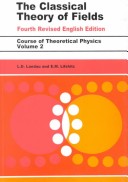recent
older stuff
Intro to my notebook
This page is being build with the intention to make theoretical physics more tractable for as many people as possible. The emphasis is on General Relativity and Classical Field Theory, but as the project evolves, it may include other subjects as well, like Quantum Mechanics or Solid Body Electrodynamics. The basis is the ten-volume Theoretical Physics textbook, composed by Lev Landau and Eugeny Lifschitz. [1] The reason behind this choice is that this book is probably the most widely distributed advanced text in the world being studied in Russia and Eastern Europe, as well as in Western Europe, North America, and Australia.
Reading between lines
Although the above course is comprehensive, it is anything but easy. The intractability stems from the often very succinct derivation of expressions that require very advanced mathematical background to obtain. In rare cases there are some red flags in the text, like ... after a long calculation, we obtain ... . As often as not, however, the whoppers come out of the blue and stop the poor student in his tracks wondering whether his long night hours over the math textbook have been worth it. Not surprisingly, the only thing that can be born in the head of the desperate student in such a moment, is an anecdote. Here is one, exactly to the point:
Landau and Lifschitz are writing their ... let's say 137th physics textbook. Trying to prove some complex theorem, they've been sweating the proof all of the past week. Monday morning in runs Lifschitz, his clothes mismatched, his face red, his hands shaking...
Landau: My, you look horrible. What's going on?..
Lifschitz:Well, last night I (finally!) finished the proof, put all of the pages into a folder, and ... and I lost it in the subway! On my way here!..
Landau: Hmm ... I guess we'll have to do the same as last time – we'll just write "obviously, it follows that ... "
I think that the problems for the readers/students come from the mathematical genius of Landau. Mentally making all the intermediate calculations, he expects from his readers to follow him easily with the help of pen and paper. Very few of us justify these expectations.
Emotional math
What follows comes from notes that I jotted on slips of paper as I went along Theoretical Physics Vol. II, Classical Field Theory, 1967, Moscow (the 5th Russian Edition). I quote chapters, rather than pages, because this will be easier for readers of the English editions to follow. As of necessity, the building of this page will take a long time, there will be some period between appearance of individual items. As I pull out my notes, I will put them here not in the order that they are in the book, but by order of difficulty, starting with the hardest nuts and working towards more pliable matter.
My belief is that full understanding of even the most repetitive and obscure scientific subject is not possible without getting into the skin of the author, following closely each of the various emotions that have passed through his mind as he has grappled with the topic. It seems very unfortunate that the majority of researchers and authors, supported by the journals' editorial staff, is exactly on the opposite opinion. Who knows how much valuable knowledge has been buried under the impenetrable cover of the dispassionate gibberish and firmly entrenched cliches that we have learned to identify with scientific language! No emotion is allowed to show through, it is pure logic from beginning to end. However, the whole paper reads like a listing of a computer program and the reader is lost in the first lines by not being able to sift what he has ploughed. The poor man, if there were only one or two emotions to highlight this impassable darkness, to show him what is the bridge and what is just a dangerous reef, he might have read at least the introduction. But alas, there is no such guiding light and the whole unshakable logic remains hidden between the covers of some dusty volume on the library shelf, unshaken for decades by a human being.
For a scientific prose to be read, and be understood by as many people as possible, author's emotions are as important, and in many instances, even more important than mathematical formulae. By letting his emotions show through, the author is more fair and compassionate to the reader, showing him/her that the text is not written by some dispassionate and unmistakable machine, that he (the author) has thought a great deal about certain details, wandering through false leads, entertaining and then discarding some false hopes, to reach at the end of the road to a hard-won piece of the truth. So, please, allow me to pour my emotions on these web pages. Some people get emotional when listening to music, others – when reading lyrics. For me, even the most beautiful lyrics is not able to stir those emotions that overflow when I read Landau & Lifshitz. If I don't share them with others, they are threatening to stifle me. I beg your forgiveness if at places my text seems naive through overdoing with my amazements, frustrations, anger, or helplessness. I'm just a human being, after all, facing the immenseness and uncomprehensibility of the Universe, as all of us are.
I wish everybody good luck in his exams and will be glad if this page turns the hardest problems into the easiest ones.
